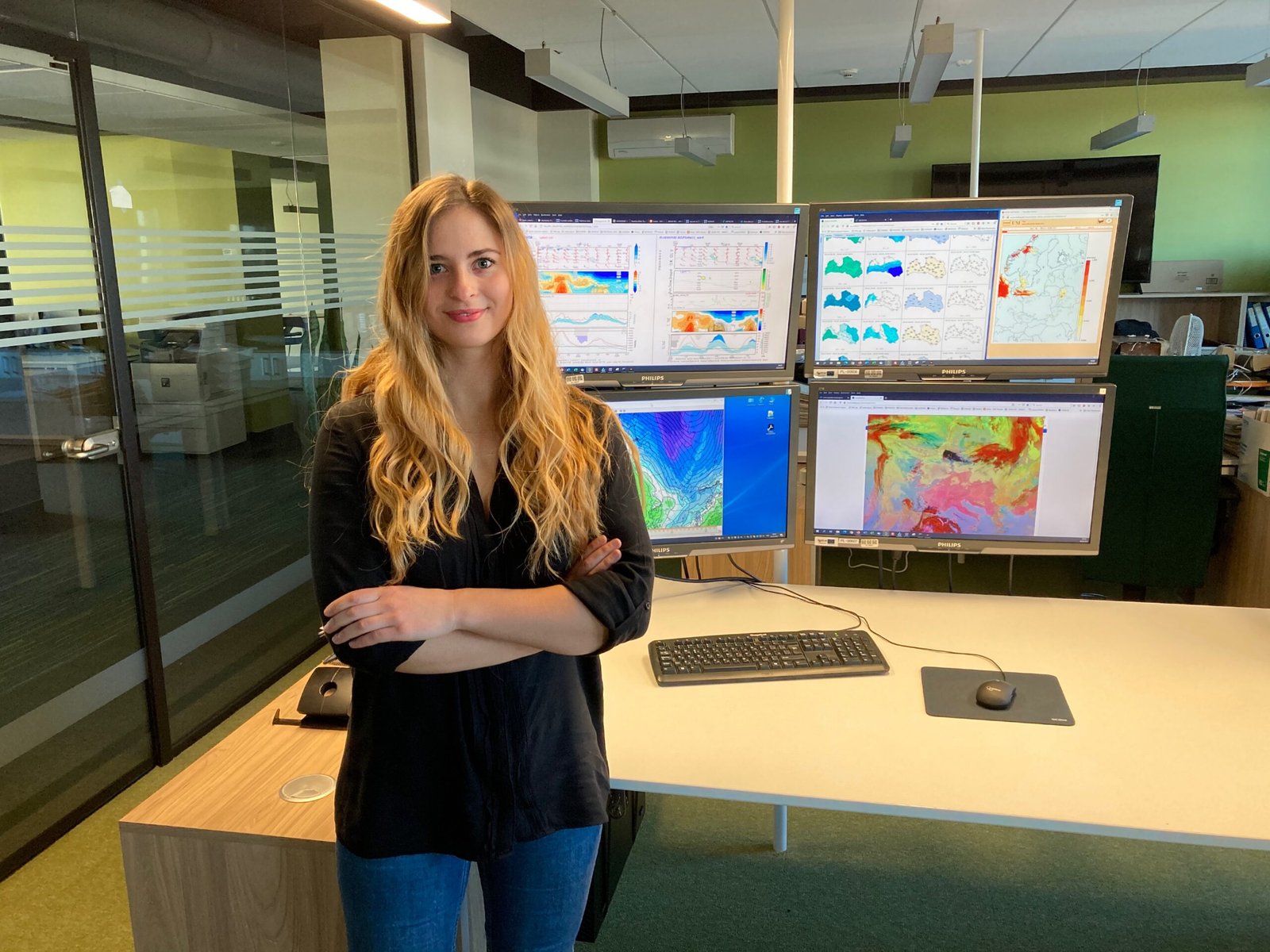When you hear the word “sinoptiķis,” you might not immediately recognize it, but it plays a crucial role in our daily lives. A sinoptiķis, or meteorologist, is the person who helps us decide whether to bring an umbrella, wear sunscreen, or brace for a storm. This article delves into the world of sinoptiķis, exploring their roles, responsibilities, and the importance of their work.
The Role of a Sinoptiķis
Historical Background
The role of a sinoptiķis has evolved significantly over the centuries. Early meteorologists relied on simple observations and folklore to predict the weather. Ancient civilizations often looked to the skies and natural signs to foresee changes in the weather, but their methods were rudimentary compared to today’s standards.
Modern-Day Responsibilities
In contemporary times, sinoptiķis use advanced technology and scientific methods to forecast the weather. Their responsibilities include monitoring atmospheric conditions, analyzing weather data, and providing accurate forecasts to the public. They play a pivotal role in warning communities about severe weather events, thereby saving lives and property.
Educational Path to Becoming a Sinoptiķis
Relevant Degrees and Certifications
To become a sinoptiķis, one typically needs a degree in meteorology or atmospheric science. These programs cover a wide range of topics, including climatology, physics, and environmental science. Many sinoptiķis also pursue advanced degrees to specialize in areas such as severe weather, climate change, or computational meteorology.
Specialized Training Programs
In addition to formal education, aspiring sinoptiķis often participate in specialized training programs. These may include internships with meteorological organizations, workshops on the latest forecasting techniques, and hands-on experience with weather monitoring equipment.
Skills Required for a Sinoptiķis
Analytical Skills
A sinoptiķis must possess strong analytical skills to interpret complex weather data. They need to analyze patterns and make sense of various meteorological phenomena to provide accurate forecasts.
Technical Proficiency
Proficiency with technology is essential for a sinoptiķis. They use a range of tools and software to gather and analyze weather data. Familiarity with computer models, radar systems, and satellite imagery is crucial.
Communication Abilities
Being able to communicate findings effectively is another vital skill. Sinoptiķis must present their forecasts clearly to the public, emergency services, and other stakeholders. This often involves translating technical data into understandable information.
Tools and Technology Used by Sinoptiķis
Weather Monitoring Instruments
Modern sinoptiķis use a variety of instruments to monitor the weather. These include thermometers, barometers, anemometers, and hygrometers. Each tool provides essential data about temperature, atmospheric pressure, wind speed, and humidity, respectively.
Software and Data Analysis Tools
Advanced software programs and data analysis tools are also integral to a sinoptiķis’s work. These tools help process vast amounts of data, create weather models, and predict future conditions. Commonly used software includes Geographic Information Systems (GIS), statistical analysis programs, and custom meteorological applications.
Types of Weather Phenomena Studied by Sinoptiķis
Atmospheric Pressure Systems
Sinoptiķis study atmospheric pressure systems to understand weather patterns. High and low-pressure systems influence weather conditions such as clear skies or storms.
Cloud Formations and Precipitation
Analyzing cloud formations and precipitation patterns helps sinoptiķis predict rain, snow, sleet, and hail. Understanding these elements is vital for accurate weather forecasting.
Storms and Extreme Weather Events
Predicting storms and extreme weather events is one of the most critical aspects of a sinoptiķis’s job. This includes forecasting hurricanes, tornadoes, and severe thunderstorms, which can have devastating impacts on communities.
The Impact of Sinoptiķis on Society
Weather Forecasting and Public Safety
Accurate weather forecasting is crucial for public safety. Sinopti ķis provide warnings about severe weather, allowing people to prepare and take necessary precautions. This can prevent injuries and save lives during natural disasters.
Agriculture and Farming
Farmers rely heavily on weather forecasts to plan their activities. Sinopti ķis provide crucial information that helps farmers decide when to plant, irrigate, and harvest crops, ensuring better yields and food security.
Aviation and Maritime Industries
The aviation and maritime industries depend on accurate weather forecasts for safe operations. Sinoptiķis help pilots and ship captains navigate safely by predicting conditions such as turbulence, storms, and rough seas.
Challenges Faced by Sinoptiķis
Predicting Uncertain Weather Patterns
Weather prediction is inherently uncertain due to the complex and dynamic nature of the atmosphere. Sinopti ķis constantly face the challenge of making accurate forecasts amidst these uncertainties.
Climate Change and Its Effects
Climate change adds another layer of complexity to weather forecasting. Sinoptiķis must account for long-term changes in weather patterns and the increasing frequency of extreme weather events.
The Future of Sinoptiķis
Advances in Meteorological Technology
The future of sinoptiķis looks promising with advancements in meteorological technology. Improved satellite imagery, more sophisticated computer models, and enhanced data collection methods are paving the way for even more accurate weather predictions.
The Role of Artificial Intelligence
Artificial intelligence (AI) is set to revolutionize meteorology. AI algorithms can analyze vast amounts of data quickly and identify patterns that humans might miss. This can lead to more precise forecasts and better understanding of complex weather systems.
Case Studies: Notable Sinoptiķis
Famous Sinoptiķis in History
Throughout history, there have been many notable sinopti ķis who have made significant contributions to meteorology. For example, Alfred Wegener, known for his theory of continental drift, also made important advancements in understanding atmospheric circulation.
Modern-Day Influencers
Today, sinopti ķis like Jim Cantore and Al Roker are household names, bringing weather forecasts to millions of viewers. Their ability to communicate complex weather phenomena in an engaging way has made them influential figures in meteorology.
Common Misconceptions About Sinoptiķis
Myths vs. Reality
There are many misconceptions about sinoptiķis, such as the belief that weather predictions are often wrong. In reality, advances in technology have greatly improved the accuracy of forecasts.
The Accuracy of Weather Predictions
While it’s true that weather predictions are not always 100% accurate, the reliability of forecasts has significantly increased over the years. Sinopti ķis use a combination of historical data, current observations, and computer models to make informed predictions.
The Global Perspective on Sinoptiķis
Sinoptiķis Around the World
Meteorology is a global science, and sinoptiķis around the world work together to understand and predict weather patterns. International collaboration is essential for tracking large-scale weather systems and sharing data.
International Collaboration in Meteorology
Organizations like the World Meteorological Organization (WMO) facilitate cooperation among sinopti ķis worldwide. This collaboration helps improve global weather predictions and responses to climate change.
The Daily Life of a Sinoptiķis
A Day in the Life
A typical day for a sinopti ķis involves analyzing weather data, creating forecasts, and communicating with the public and other stakeholders. They may also conduct research, monitor weather conditions, and participate in emergency response planning.
Work Environment and Schedules
Sinoptiķis often work in weather stations, research facilities, or broadcasting studios. Their schedules can be demanding, especially during severe weather events, which may require round-the-clock monitoring and reporting.
How to Engage with Sinoptiķis Reports
Understanding Weather Reports
To make the most of weather reports, it’s important to understand the terminology and symbols used. Sinopti ķis often provide detailed explanations to help the public interpret their forecasts.
Utilizing Forecasts in Everyday Life
Weather forecasts are not just for planning outdoor activities. They can also help you make informed decisions about travel, clothing, and even your health. By paying attention to sinopti ķis reports, you can stay prepared for whatever the weather brings.
Conclusion
Sinoptiķis play a vital role in our daily lives, helping us navigate the ever-changing weather. Their expertise ensures our safety, supports various industries, and enhances our understanding of the natural world. By appreciating the work of sinopti ķis, we can better prepare for the future and make informed decisions based on their valuable forecasts.
FAQs
What is a sinoptiķis?
A sinoptiķis is a meteorologist who studies and forecasts the weather using scientific methods and technology.
How accurate are weather forecasts?
Weather forecasts have become increasingly accurate due to advancements in technology, though they are still subject to uncertainty.
What tools do sinoptiķis use?
Sinopti ķis use a variety of tools, including weather monitoring instruments, computer models, and satellite imagery, to analyze weather data.
Why is weather forecasting important?
Weather forecasting is crucial for public safety, agriculture, aviation, maritime activities, and everyday decision-making.
How can I become a sinoptiķis?
To become a sinopti ķis, you typically need a degree in meteorology or atmospheric science, along with specialized training and experience in the field.





